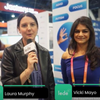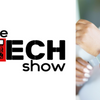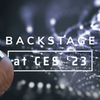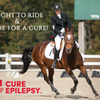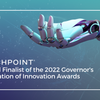Thrive Global - Wearable Devices Use Neuroscience To Help Adults and Children Sleep Better
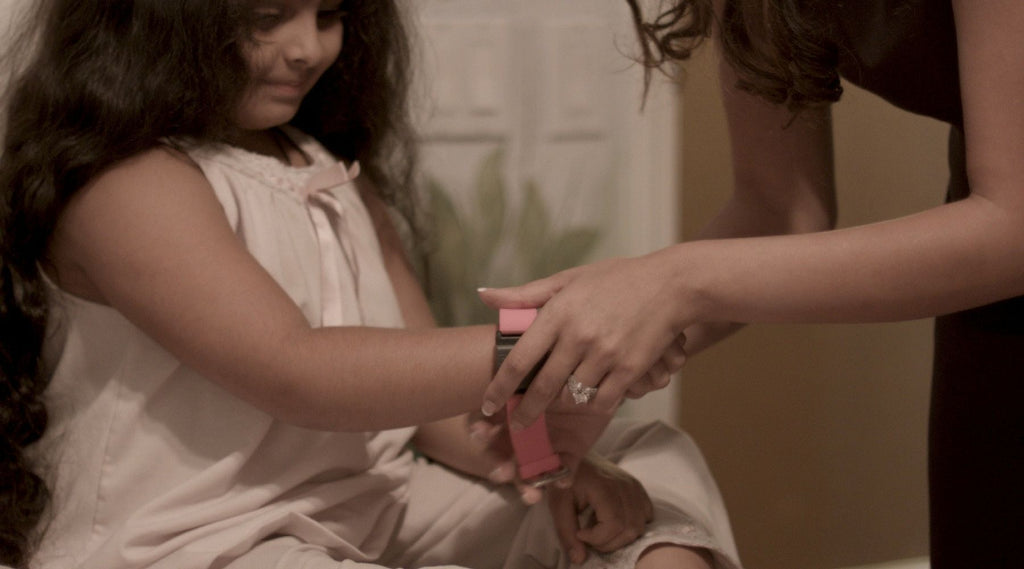
Wearable Devices Use Neuroscience To Help Adults and Children Sleep Better
Falling asleep after a busy workday should be effortless, but in reality, getting restful sleep is the stuff of dreams. In fact, millions of Americans struggle to get a good night’s rest every night - 50 to 70 million, to be exact. According to the American Sleep Association, that’s the number of US adults that suffer from a sleep disorder. It’s not just adults that spend their nights tossing and turning, either. It’s been estimated that 1 to 4 percent of children suffer from sleep apnea, many of them being between the ages of 2 and 8.
In an increasingly tech-heavy world, new gadgets are constantly being churned out with claims of improving sleep. From “pajama belts” to “vibrating pillowcases,” sleep tech is flooding the market. Yet, while many of these products claim to help us rest easier, very few are grounded in the actual science behind sleep.
Less Gimmick, More Science
After exhausting almost every “sleep remedy” out there, “mompreneur”, Vicki Mayo’s concern for her 4 year-old daughter’s health had peaked. Vicki felt helpless, unable to soothe the vivid night terrors that had drained her child’s energy for the last year.
“It was horrible. I felt helpless, like there was nothing I could do for her,” Vicki said. “The whole family was suffering because she would wake up nightly and we’d all be awake. The following mornings we would be exhausted - we were caught in spiral I couldn’t get out of. I felt like I had tried everything, and we were at our wits end.”
After endless nights spent watching her daughter suffer in her sleep, Vicki confided in her friend, Dr. Amy Serin, neuropsychologist and founder of the Serin Center. Unbeknownst to the two friends, this conversation marked the start of a life-altering venture.
Dr. Serin had isolated a successful component of PTSD (Post-Traumatic Stress Disorder) treatment in her clinic, and had been researching its ability to significantly relieve stress in adults and children. She shared the idea with Vicki, explaining that the technology, called BLAST (bi-lateral alternating stimulation in tactile form), had been embedded in two handheld non-invasive devices, and Vicki wanted to try the neurotechnology with her daughter during her next episode.
Vicki was intrigued, but the idea of a non-invasive, fast-acting fix almost sounded too good to be true. She took Dr. Serin’s advice, and placed the devices in her daughter’s hands during her next night terror. To Vicki’s surprise, the gadgets worked - and they worked well. For the first time in years, Vicki’s daughter slept peacefully through the night.
“I went to Dr. Serin the next day and was almost in tears. I asked her what this magic was and what she was doing to bring these life changing devices to everyone,” said Vicki. “She told me that she was trying to develop it, but that progress was slow.” Vicki knew from experience that this technology had the potential to profoundly change millions of lives, “We didn’t have time to move slowly. People needed this in their lives now.”
That day, Vicki and Dr. Serin joined forces to found The Touchpoint Solution, and began tirelessly working to make BLAST technology accessible to the world.
The solution came in the form of lightweight, anti stress wearable devices called TouchPoints, which they embedded with Dr. Serin’s patent-pending BLAST technology. These neuro-tech wearables provide an effortless, non-invasive method of calming an overactive stress response discreetly and quickly.
“Although sleep is a natural state, artificial light, lack of exercise, poor diet, use of stimulants, and other factors lead to struggles with this basic process, wreaking havoc on mental and physical health for many people,” Dr. Serin explained. “TouchPoints represent one stress relief solution. Because sleep is dependent on nervous system regulation, reducing stress and restoring someone to a state of calm can promote sleep onset, and can help someone go back to sleep if they wake up prematurely during the night.” The neuroscience in TouchPoints does just that. BLAST has been used as a successful component of EMDR (Eye Movement Desensitization and Reprocessing) therapy, the leading form of PTSD treatment for decades. We further discovered that the effect of BLAST technology facilitated regulation that could help ease someone into sleep.”
How Sleep Affects Stress
Americans don’t just have a sleep problem, they have a stress problem, too. Findings from the Anxiety and Depression Association of America show that seven out of ten adults in the U.S. experience stress or anxiety daily. About one-third report persistent stress or excessive anxiety daily, and it’s no surprise that seven out of ten of those adults say they have trouble sleeping.
Stress has a tremendous effect on the way we sleep. According to a report Dr. Serin wrote last year on BLAST and stress reduction, though widely recognized for its use in EMDR therapy, BLAST has been vastly underutilized as a stand-alone method for inhibiting the body’s general stress response.
"Sleep is a natural process, so you need to look at what’s occurring that’s not natural in order to understand what’s impeding that process,” Dr. Serin explained. “For many people, it's a constant state of stress, or nervous system hyperarousal. Using TouchPoints before sleep can lessen stress so that this natural process can occur without struggle."
The stress relieving devices are controlled using a free, smartphone application, loaded with six pre-settings, “Calm”, “Focus”, “Sleep”, “Anger”, “Performance”, and “Craving”, all of which were created by Dr. Serin herself. In order to achieve a good night’s rest with TouchPoints, she recommends using them on the “sleep” setting for 15 minutes prior to bedtime. However, because the stress-busting technology is so calming, many TouchPoints’ users tend to fall asleep in a matter of minutes with them on. In fact, due to user demand, Dr. Serin and Vicki are planning to include a sleep timer in future upgraded versions of the TouchPoints™’ app to help individuals better achieve their personal sleep goals.
“Some people just need help calming stressful thoughts, while others are so anxious they may need to wear them for longer and combine the use of TouchPoints with other best practice sleep strategies,” said Vicki, CEO of The TouchPoint™ Solution.
And it’s not just overworked adults that are benefiting from TouchPoints. As Vicki knows first-hand, children who suffer from sleep difficulties also see impressive results.
“I put TouchPoints on my ten-year-old and eight-year-old sons as a go-to parenting strategy at bedtime when they are afraid of the dark, over-stimulated from an activity, or if they are having a hard time calming stressful thoughts,” Dr. Serin advised. “They like to wear the wristbands on each ankle with the sleep setting on. They fall asleep within 5 minutes, instead of being up for an hour or more. I can't tell you how many exhausted parents have come into my clinics discussing difficulties at bedtime. Fortunately, it doesn't have to be that way.”
No More Sleeping Pills
Understanding the science behind sleep can do wonders for our body. While many anti stress and sleep-related products depend on self-regulation and active awareness of our sleep patterns, most users struggle to incorporate that information into their daily routines.
Sleep trackers, for example, are becoming increasingly popular. Many of these devices track data based on sleeping patterns, like the percentage of REM (Rapid Eye Movement) sleep versus the percentage of light sleep a user gets. But, while these gadgets provide an idea about how we sleep, restless sleepers still end up suffering from sleep problems.
“Even if you understand your sleep patterns, there’s still no clear solution with these gadgets for helping people go to sleep in real-time. Other devices give information, but it’s up to the user to figure out what to do with it,” said Vicki. “TouchPoints are revolutionary in their effectiveness and simplicity, helping calm users and ease them into restful sleep.”
The benefits associated with restful sleep are endless. From being more productive at work, to having healthy, glowing skin, sleep affects both our mental and physical health in more ways than one. With the neuroscience in TouchPoints, the secret to sleep may be as easy as the push of a few buttons.
“I have been suffering from insomnia for about three months,” reported TouchPoints’ user, Gina George, “I can't even begin to tell you how hard I slept and how rested I felt after using TouchPoints. I used them for two nights, then skipped a night. I couldn't get to sleep, and when I did, it wasn't restful sleep. I was in so much fibromyalgia pain today, I didn't realize how much my pain was eased after getting such good, restful sleep. I will definitely not be skipping another night without my TouchPoints.”
With TouchPoints, hundreds of users around the world can finally say “goodnight” to sleeplessness and get the rest their minds and bodies deserve.
